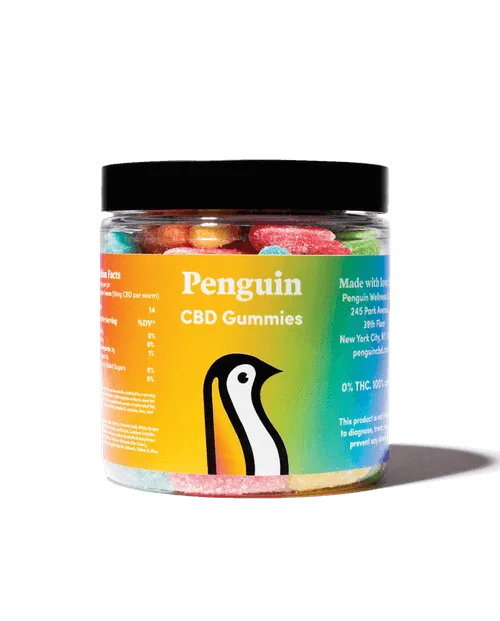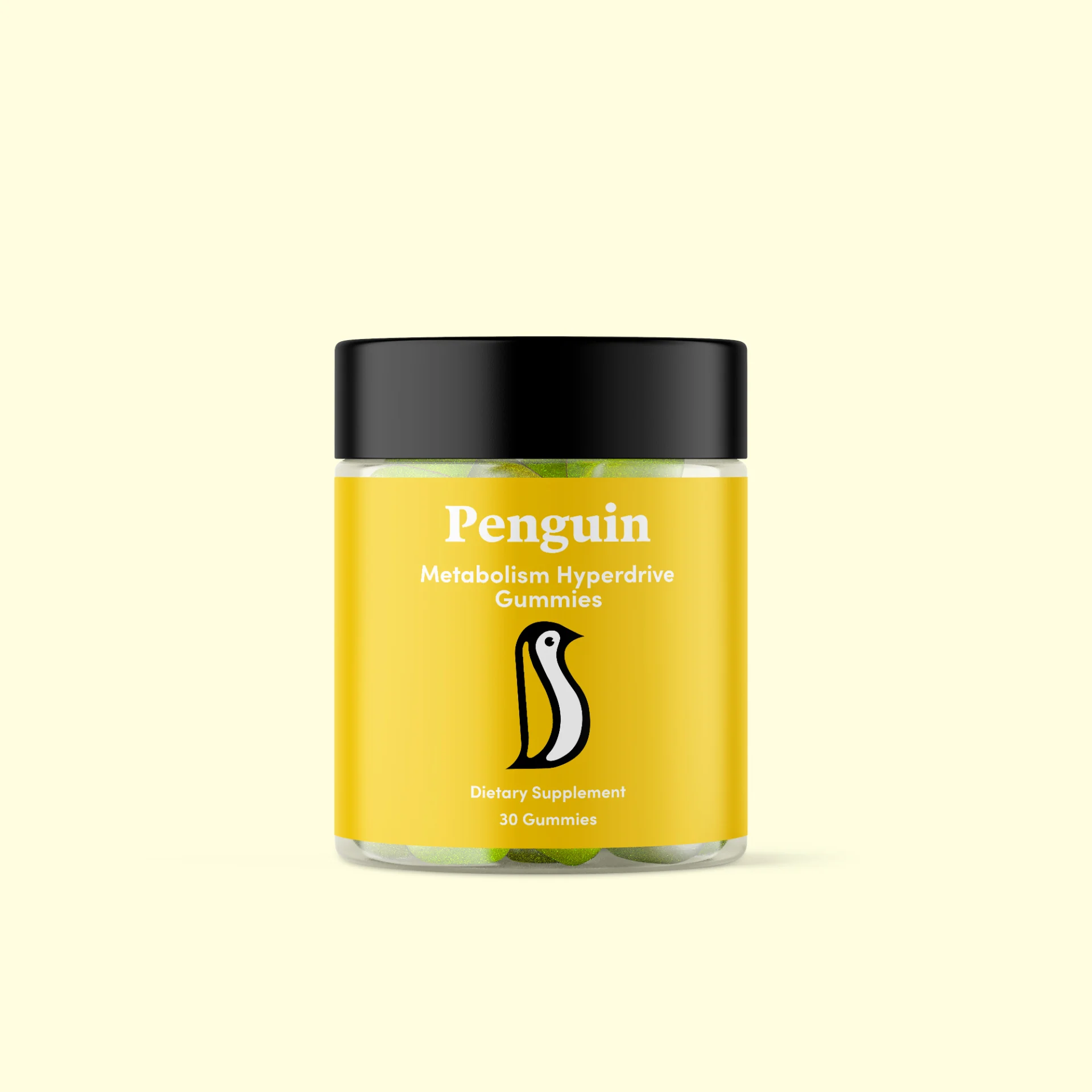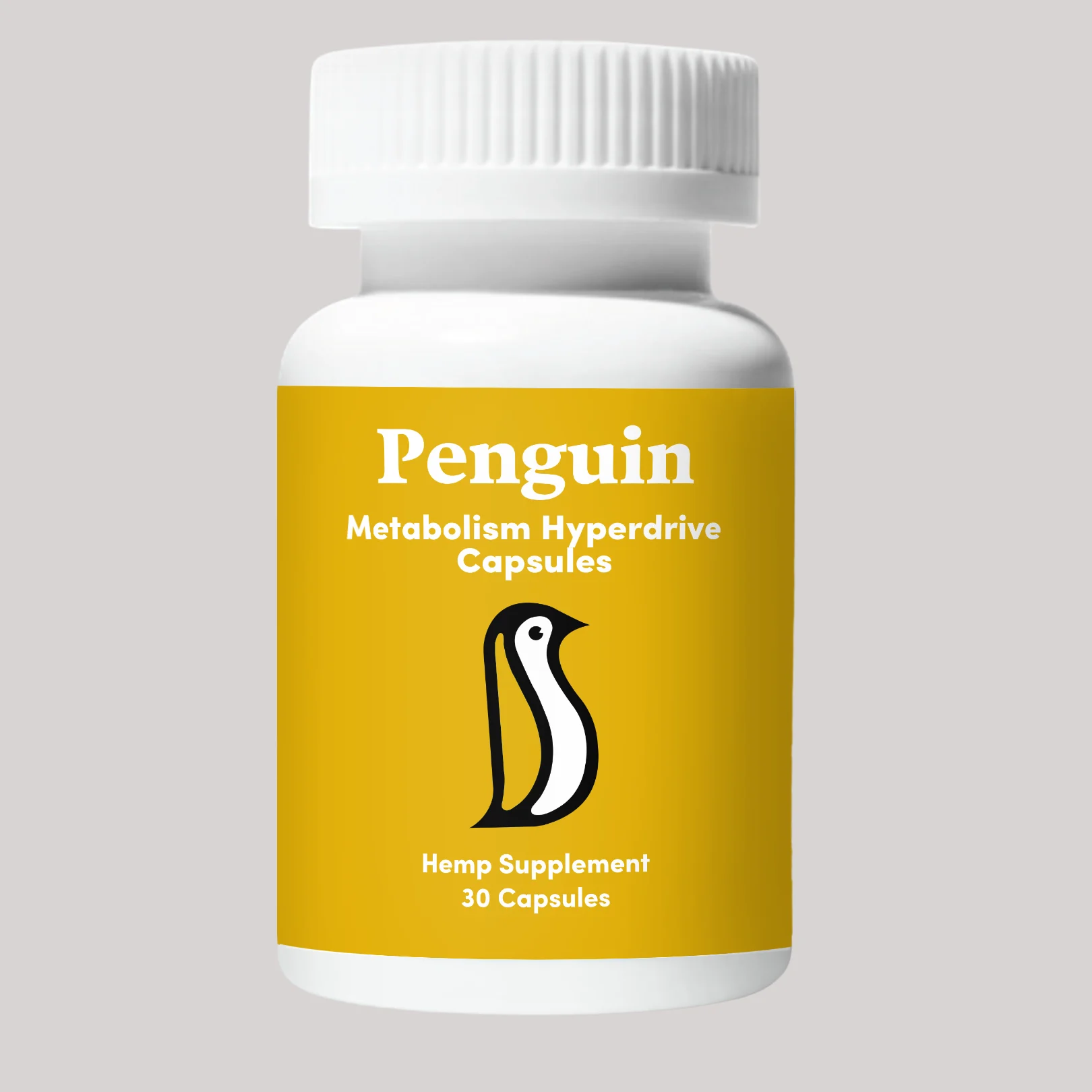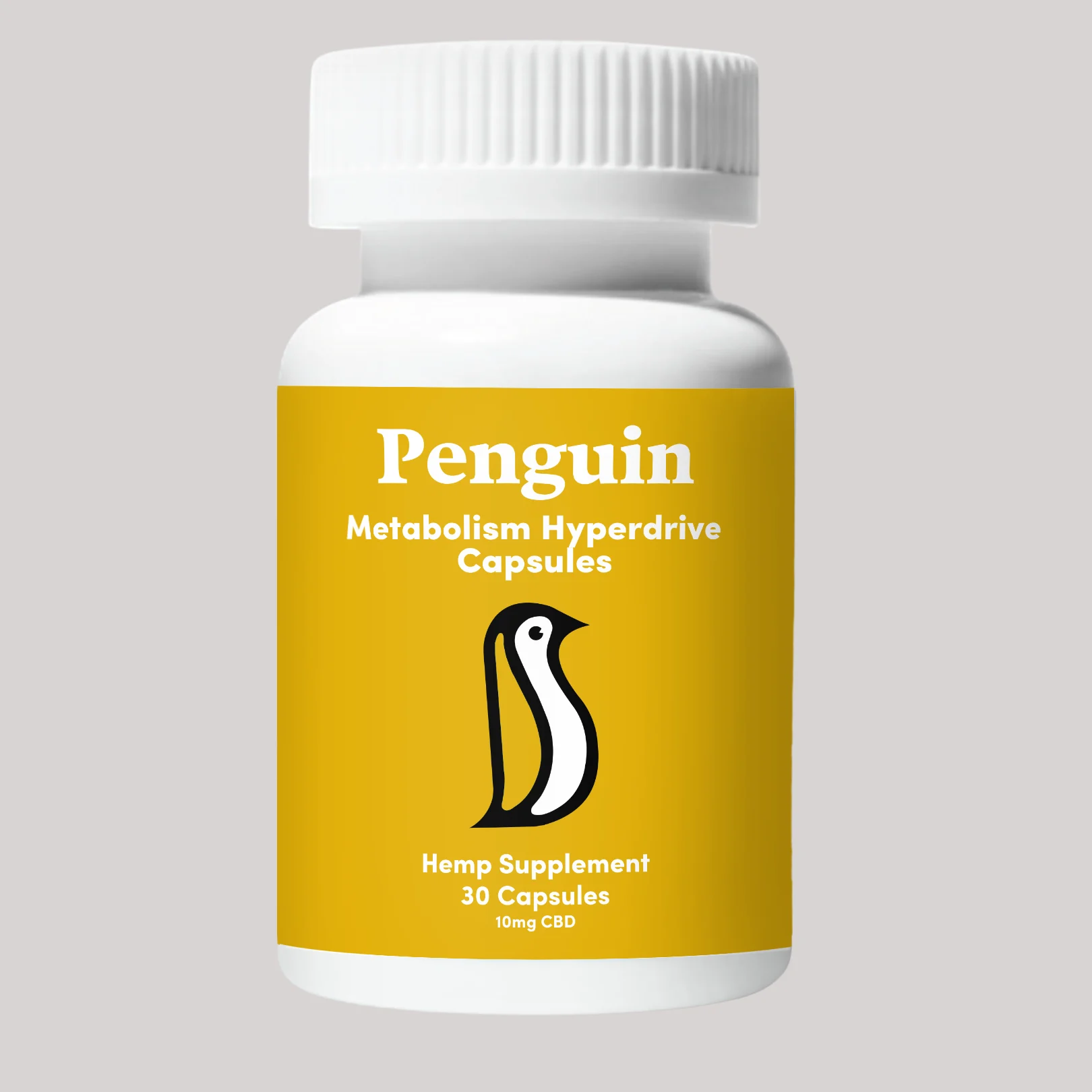CBD and Terpenes: How They Go Hand in Hand
 By Penguin CBD
By Penguin CBDSome say CBD is the best. Others say CBG is the best. Still others say terpenes are the best.
Everyone has an opinion on the best compounds that can be derived from cannabis and hemp plants, and there’s no shortage of opinion articles. However, it increasingly looks like a combination of these compounds might be best.
So let’s explore the world of hemp compounds, and see if CBD and terpenes should be spending more time together. We here at Penguin CBD certainly think they're a great match!
They’re Plant Compounds Found All Over the World
If you thought that terpenes and cannabinoids can be found only in cannabis and hemp plants, you’d be wrong. In fact, phytocannabinoids and terpenes are found in plants in all corners of the planet. You just have to know where to find them.
If you’re looking for plant terpenes throughout the world, start sniffing instead. That’s because one of the primary functions of terpenes is to produce the unique scents in plants. Here are some common scents that you might recognize from nature and the terpenes associated with them.
- Lavender, associated with the terpene linalool. Linalool smells like a calm spring morning, and is reported to have an array of potential benefits.
- Pine, produced by the terpene pinene. Pinene is most often produced by plants that live in cold weather. It’s a protective agent that keeps them from freezing too easily. It’s also what gives them their distinctive piney smell.
- Citrus, often associated with the terpene limonene. Limonene is thought to have energy-boosting properties. The alerting flavor in these sour fruits is found in many varieties of cannabis and hemp, and may give them a subtle scent of citrus.
Every one of these terpenes can be found in cannabis and hemp plants to varying degrees. In fact, well over 100 terpenoids have been identified in cannabis. Many terpenes have been shown to demonstrate significant positive benefits to consumers. Research from 2016 indicated an array of potential benefits for one of the most studied terpenes, beta-caryophyllene.
Furthermore, it’s been shown that simply by entering a forest and breathing in the naturally occurring terpenes in the air released by the plants, humans can garner many positive effects. Research from 2017 even suggested that surrounding oneself with nature and terpenes is a way to unwind from “technostress.”
More importantly, however, terpenes seem to interact with cannabinoids when combined in the human body. Research as far back as 2011 suggested that these combinations may have many important benefits for humans.
Terpenes are obviously found all over the world and show potential for human benefit, but are cannabinoids only found in cannabis varieties? The short answer is no.
While phytocannabinoids are present in unique quantities and exotic profiles, they are not the only plants that produce these types of compounds. In fact, a handful of other plants produce cannabinoids. Don’t be too surprised—even humans produce endocannabinoids, which mirror the chemical makeup of plant-derived phytocannabinoids.
Some of the other plants that produce cannabinoids are liverwort, echinacea and black pepper. However, don’t worry that you’ll be consuming a plethora of cannabinoids the next time you put pepper on your eggs. These plants aren’t known to produce these compounds at very high levels.
They’re Grown Together in Cannabis Varieties
Neither terpenes nor cannabinoids are unique to cannabis plants. But the incredible terpene profile found in cannabis varieties, coupled with the relatively high expression of important cannabinoids, makes this plant special. In other words, CBD and terpenes go hand in hand because they create such miraculous combinations in the same plant.
CBD doesn’t just complement one terpene profile. The number of cannabis varieties that exist today is virtually uncountable, and each provides a unique collection of terpenes and cannabinoids arranged in varying quantities and levels of expression. As a result, you may see pinene-loaded hemp plants producing extremely calming CBD. Or you may find limonene-laced fruity blends delivering energy-boosting CBD oils.
There seems to be a variety of hemp for every occasion, and CBD and terpenes prove they go well together across the board.
CBD and Terpenes Are Typically Extracted Together
Unfortunately, there isn’t a magical way to remove every single cannabinoid and terpene from a plant without destroying or losing some of them in the process. The extraction processes are often volatile, and the compounds are highly sensitive. The result is that no extraction process grabs 100 percent of what it’s after.
However, extraction science has come a long way, and scientists have developed methods to remove CBD and terpenes from cannabis plants in significant numbers. While some methods are thought to have a handful of dangers associated with them, others are quite harmless and could be easily done in your own kitchen.
The most advanced methods of CBD extraction involve intricate scientific knowledge and expensive lab equipment to properly process the compounds. Licenses, regulations and red tape surround such endeavors.
Let’s look at a few of the ways in which CBD and terpenes can be extracted together.
Supercritical Extraction With CO2
This method of extraction is considered to be one of the best ways to extract CBD since it doesn’t involve some of the compounds we’ll read about in a moment. Carbon dioxide is often thought of as gas because we exchange it with oxygen as we breathe. However, at low temperatures, it becomes a liquid.
In the extraction using CO2, CO2 is kept at a supercritical temperature, which makes it behave more like a fluid. Thus it acts as a solvent, breaks down cellular walls and allows for the isolation of the wanted plant compounds and removal of the unwanted.
While this form of extraction does negatively impact the terpene content to an extent, it’s thought to be one of the cleanest ways to extract CBD, especially compared to the next method.
Hydrocarbon Extraction of CBD
Though not as clean as supercritical CO2 extraction of CBD, hydrocarbons remain popular for their ability to create an array of highly potent products. Typical hydrocarbon solvents include propane, butane and ethanol.
Food-Based Oil Extraction of CBD
If you wanted, you could place dried and decarboxylated hemp into olive oil, melted butter or even coconut oil and draw out the CBD into the oil itself. In fact, these types of oils are quite effective at drawing out every plant compound, including chlorophyll, which doesn’t taste very good.
Distillation of Cannabis and Hemp
People who want CBD and nothing else should go for CBD isolate. There are a few ways to produce it. Perhaps the least intensive is through a process called distillation. While it can be used to extract more than just CBD, this method of extraction ensures a pure final product in a couple of ways:
- Distillation evaporates mixed samples then isolates the vapors based on their weight. That is, through a series of chambers, the heaviest vapors will sit in the lowest collection chamber and the lightest in the highest.
- Once separated, distilled CBD oils can be run again and again through the same process. This further purifies the sample.
Of course, this purification leads to the separation of CBD from the rest of the plant’s components, including its terpenes. However, that separation may negatively impact the taste and efficacy of the final product.
Flavor
We touched briefly on the idea that terpenes can impact the flavor or scent of plants. For example, an explosion of limonene makes lemons sour and being packed full of pinene makes pine trees smell like their namesake. But terpenes offer much more to the palate than that. Here is a list of some terpenes found in cannabis varieties and the flavors or scents you might associate them with:
- Caryophyllene: gives pepper its snappy, peppery taste
- Terpinolene: a fruit scent mixed into cumin and lilacs
- Humulene: an aromatic scent located in hops and some types of wood
- Ocimene: often used in perfumes, it naturally beautifies the smells of orchids and mint
- Myrcene: herbal, musky and a bit citrusy; you can find myrcene in thyme, bay leaves and mango
Of course, it’s not common for us to think of flavors in this manner. We more often use the layperson’s terms for scent and flavor. However, it’s important to recognize that they are attached to certain plant compounds (their terpenes), which can be found in interesting arrays throughout cannabis.
We may never know for sure why cannabis plants decided to put so much energy into producing such an array of compounds. What we do know is that, when combined, these compounds exhibit profound properties that outweigh the sum of their whole. We often refer to this concept as the “entourage effect.”
The Entourage Effect: CBD and Terpenes Team Up
CBD has interesting properties on its own. Terpenes each seem to produce theirs as well.
When combined, however, they work in new, powerful ways that have intrigued researchers for ages. As research continues, we’ll have to listen more to what consumers are saying about teaming up CBD and terpenes.
What Do Consumers Say About CBD and Terpenes?
While we did mention that some people prefer to take their CBD in isolation, this remains a niche segment of the CBD market. It seems that most consumers prefer CBD when combined with other plant compounds, such as terpenes. In fact, according to ACS Laboratory, CBD isolates represent an undervalued percentage of the market. Over the past year or so, their data have indicated that the price per kilogram of CBD isolate has dropped remarkably. They note a roughly 66 percent markdown. The price drop, they say, is likely due to lower demand compared to other CBD products.
The products that continue to expand and experience the highest level of customer demand are those that have more to offer a wider range of consumers.
One product type to consider, instead of a CBD isolate, would be a full-spectrum CBD product. While not available everywhere due to the presence of THC, full-spectrum CBD oils do reach more consumers. That’s because they boast the extensive benefits of the entourage effect. The terpene profile of these products is likely to be wider as well. The added cost of reintroducing terpenes into CBD isolates often directs people toward a product that never had to remove them in the first place.
However, not everyone wants THC in their CBD products, even in insignificant amounts. That’s why the crowd-pleasing option is usually broad-spectrum CBD products.
This option gives people the chance to experience the full range of the entourage effect without having to ingest any THC. That’s because these types of CBD oil for sale have the THC removed. It’s one of the ways that the CBD marketplace listened to the consumers, and it now represents a significant portion of what’s available. For people who are looking specifically for CBD, there’s no reason for them to exclude terpenes and purchase a CBD isolate. But they’ll also want every cannabinoid available, sans the psychoactive compounds.
In this way, CBD goes better with terpenes than any other compound. Many consumers have shown their support for these types of products, and their enthusiasm continues to build. Research suggests that the CBD marketplace will continue to grow at an annual rate of 107 percent over the next several years. That alone may be proof that people are loving what’s available and are spreading the word.
If you feel like you better understand how and why CBD and terpenes go so well together, please share this article with your friends.












